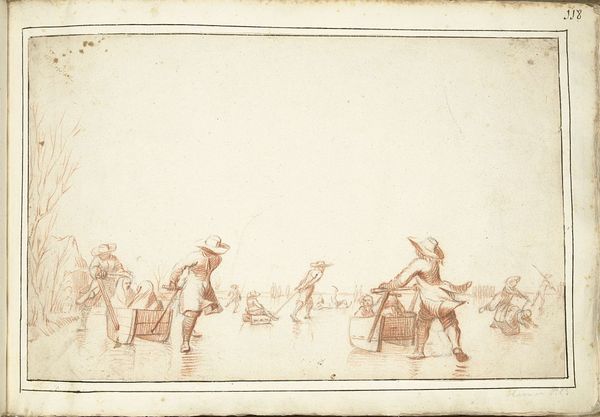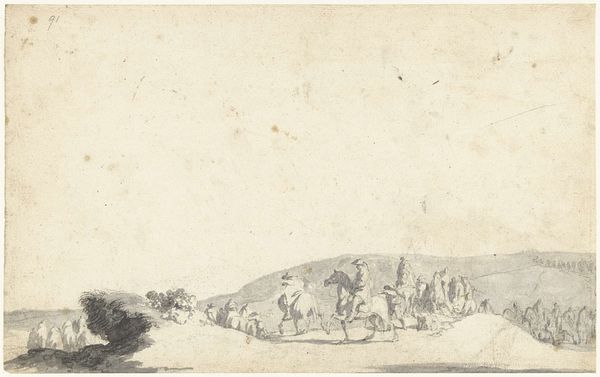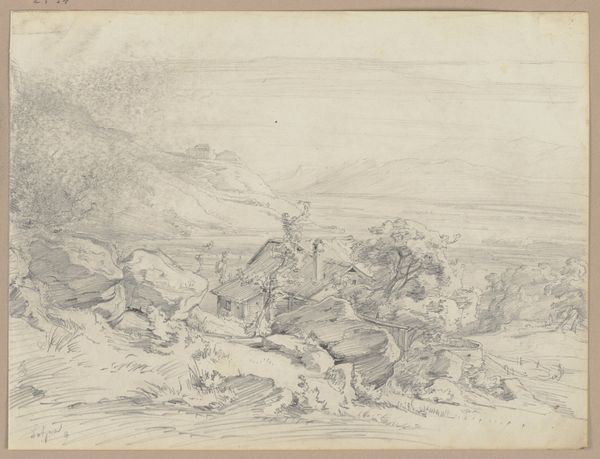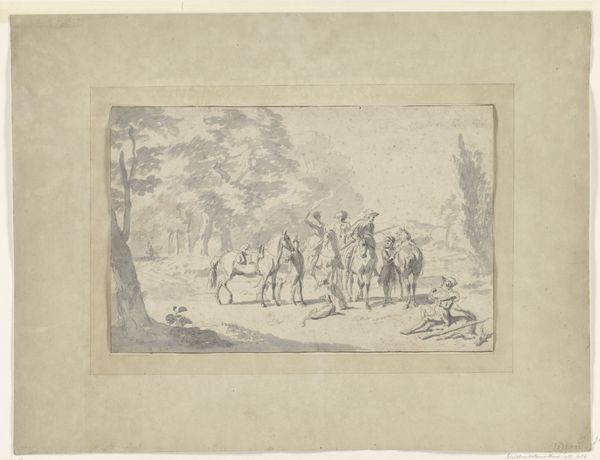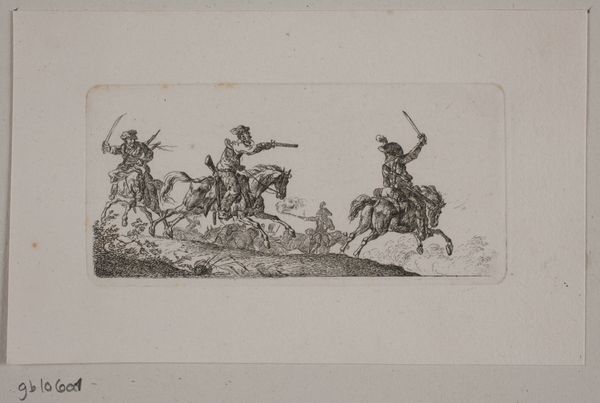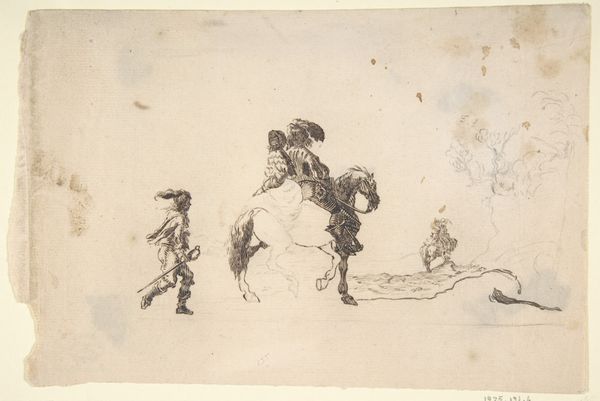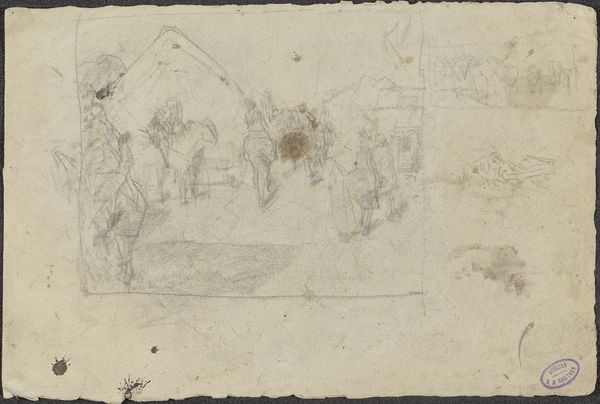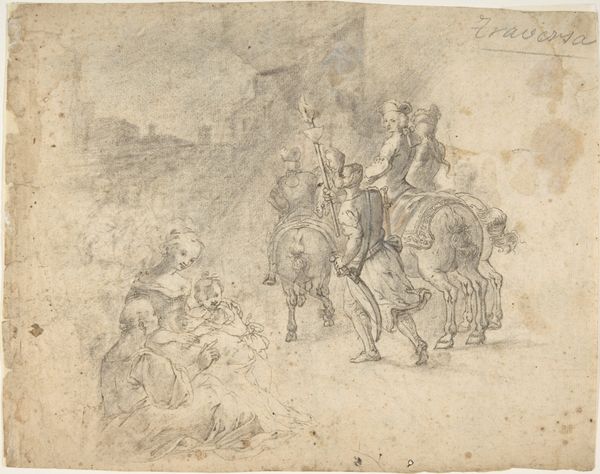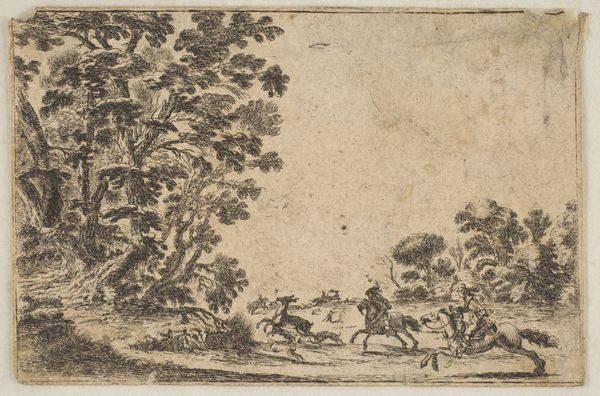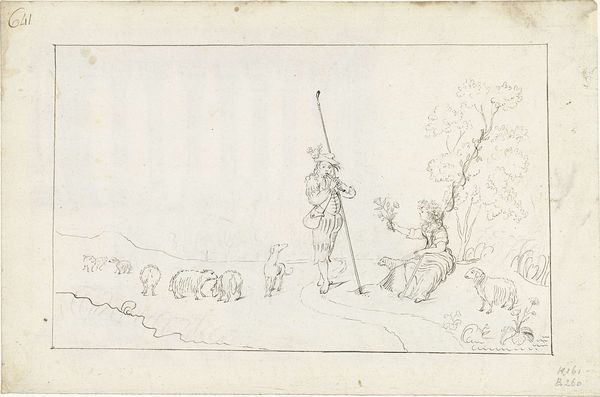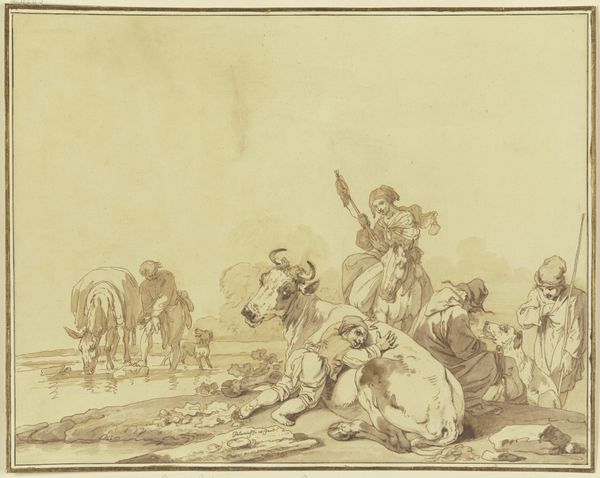
drawing, print, paper, ink, pen
#
drawing
#
ink drawing
#
animal
# print
#
pen sketch
#
dog
#
landscape
#
figuration
#
paper
#
ink
#
romanticism
#
horse
#
men
#
pen
#
genre-painting
Dimensions: sheet: 4 3/4 x 7 9/16 in. (12.1 x 19.2 cm)
Copyright: Public Domain
Editor: This pen and ink drawing is titled "Sketch of horsemen with dogs," created sometime between 1800 and 1900 by an anonymous artist. The scene has a certain air of privilege, wouldn't you say? How do you interpret this work in terms of power and social context? Curator: That’s an incisive starting point. The image undeniably hints at a social hierarchy, and given the likely period, we might delve into the Romantic era’s complex relationship with both nature and social order. Scenes like this, of hunting parties, often mask underlying socio-economic inequalities. Who benefits from this activity, and whose labor makes it possible? Consider the use of animals: horses and dogs elevated to partners in the "sport," while the rural population, whose lives likely intersected with these hunts, remain unseen and unacknowledged. Does the landscape itself become a stage for reinforcing existing power structures? Editor: That's a perspective I hadn't fully considered. I was mostly seeing the action, but now I understand it reflects something larger. So the artist, even anonymously, may be unconsciously reflecting the power dynamics of the time? Curator: Exactly. The drawing's romanticized vision of the hunt normalizes a certain way of life. Can you identify the symbols the artist might have employed to convey status and control? Look closely at the figures, their posture, their relationship to the animals. Editor: The figures on horseback are clearly dominant, looking straight ahead with dogs surrounding their horses. Their posture makes them much more important that the standing hunter. It strikes me how we easily consume these kinds of images without questioning the embedded narratives they reinforce. Curator: Precisely. The seemingly benign scene participates in a larger cultural script that has historically marginalized certain groups while celebrating others. Editor: Thank you. I realize now the artwork reflects not only social stratification and power but also how artistic choices reproduce social ideologies. Curator: My pleasure. Remember, art is rarely neutral; it’s often a reflection, a contestation, or even a reinforcement of the status quo. Always ask, "Whose story is being told, and whose is being left out?".
Comments
No comments
Be the first to comment and join the conversation on the ultimate creative platform.

